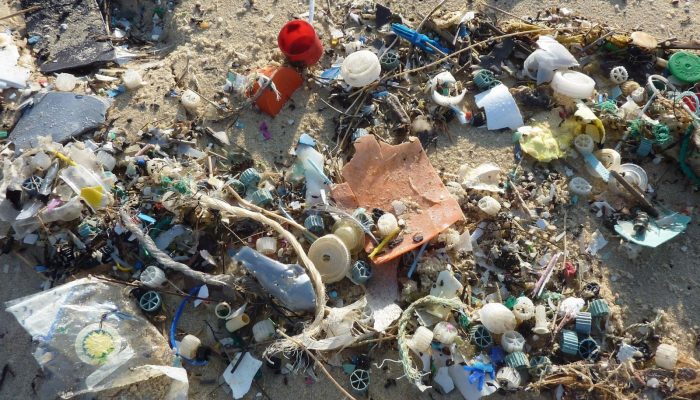
Geotalk is a regular feature highlighting early career researchers and their work. In this interview we speak to Erik van Sebille, an oceanographer at the Grantham Institute at Imperial Collage London, and winner of the 2016 OS Outstanding Young Scientist Award. As an expert in understanding how oceans transport all kinds of materials, from water and heat through to plastics, Erik has gained detailed knowledge about how water masses move, particularly how they travel from one ocean basin to the next. He has applied his knowledge to understanding problems with societal impacts, such as what dynamics govern drifting debris that collects in garbage patches and the pathways of the Fukushima radioactive plume.
First, could you introduce yourself and tell us a little more about your career path so far?
I am a physicist by training, with an PhD in Physical Oceanography from Utrecht University in the Netherlands. After finishing my PhD in 2009, I did a two-year postdoc at the University of Miami. In 2011, I became a Fellow and lecturer at the University of New South Wales in Sydney, Australia. And then in early 2015 I came back to Europe, as a lecturer at Imperial College London. So I’ve been moving around a bit, living and working in three different continents in the past 5 years. It’s been a fantastic journey and I’m really happy to have lived in such beautiful and fun places.
During EGU 2016, you received the Outstanding Young Scientist Award from the Ocean Sciences Division. You presented your recent work on modelling the global distribution of floating plastic pollution in the oceans. How big a problem does plastic pollution present to our oceans and why should people care?
It’s shocking how much plastic there is in the ocean. Quite literally these days, it’s hard to go to a place in the ocean and not find tiny pieces of plastic. In nearly every surface trawl, sediment sample, or biopsy we take, we find plastic.
However, while we find plastic everywhere, we have no idea what its global extent is. There are really only two numbers that are known with some confidence in the global ocean plastic budget: the total amount of plastic floating at the surface today is in the order hundreds of thousands of tonnes. And the total amount of plastic going into the ocean in a single year is in the order of 10 million metric tonnes. So the flux is 2 orders of magnitude larger than the stock. In other words, more than 99% of the plastic in the ocean is not at the surface!
How, exactly, do you go about building the models which help you investigate where the plastic in the ocean waters is?
My research tries to find out where all this plastic is, by tracking it virtually in high-resolution Ocean General Circulation Models such as NEMO. NEMO is a large European computer simulation that replicates the movement of ocean water around the globe. Within this oceanic flow field, we’re literally tracking billions of virtual plastic particles, from their sources on land as they are carried around by the ocean currents.
The difficult bit is to make the virtual particles behave like plastic. In order to realistically simulate the pathways and fate of the plastic, we need to simulate fragmentation (how plastics break up), ingestion (animals who eat plastic), biofouling (how algae grow on the plastic), beaching (how plastic particles end up on coastlines) and a dozen other processes that happen to plastic in the real ocean. That’s what my team and I are working on!
Then, once we can track the plastic within models with reasonable accuracy, we can start asking important questions like: Where are ecosystems most at risk? Whose plastic ends up where? And where can we best clean up the plastic?
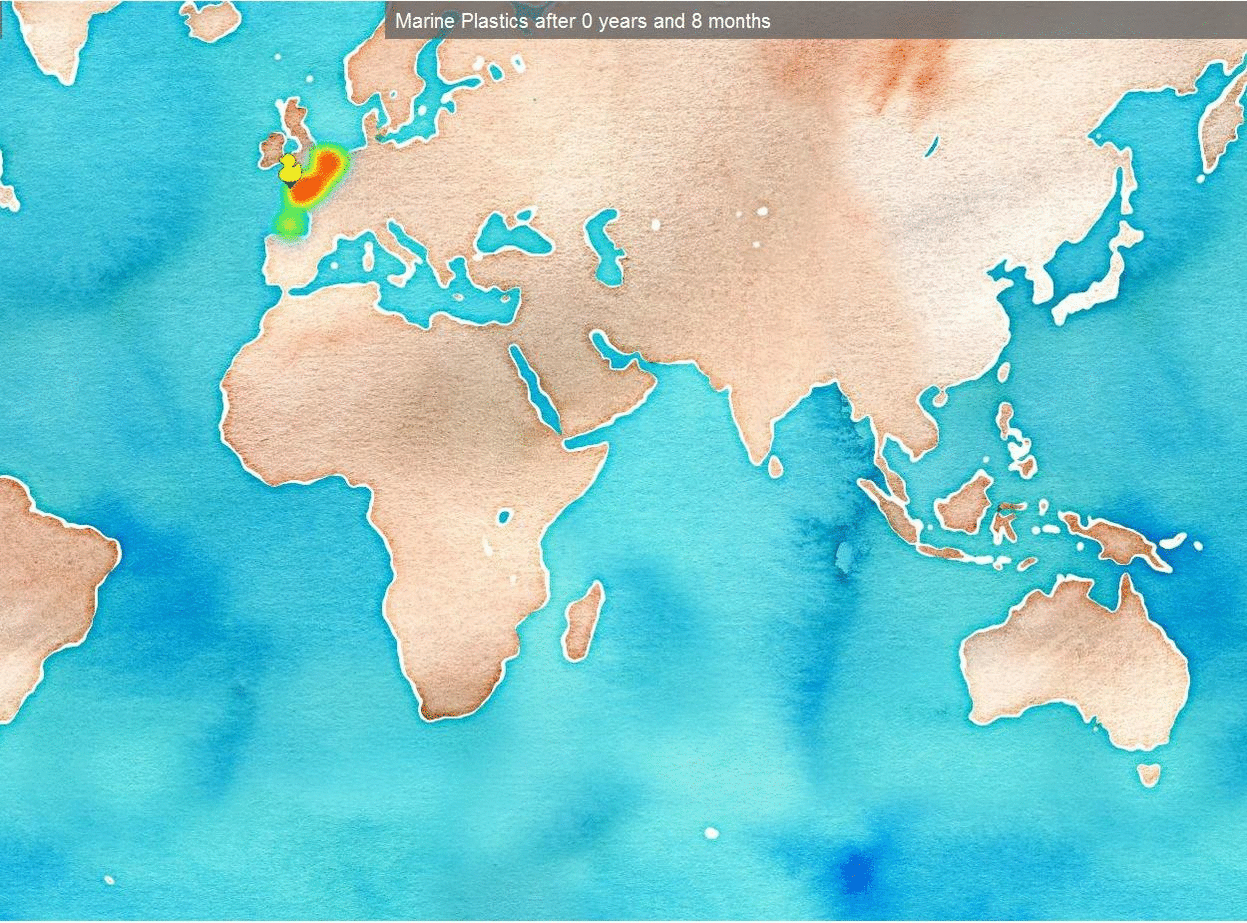
Erik, along with colleague David Fuchs, created Plastic Adrift.org. A page which models the journey of plastics in the oceans. The research used to create the simulation is described in this IOP paper.
So, are you at a stage where you can reliably track particles of plastic in your simulation? And if so, what can you tell us about the distribution of plastic across the world’s oceans?
No, we’re not nearly there yet. We’re just beginning with this exciting project, which was awarded a large European Research Council Grant this year. Ask me again in five years 😉
The outlook isn’t positive, so, how can we go about mitigating the problem?
The situation is pretty dire, indeed. Global plastic production has increased exponentially over the last decades, and there is no reason to think that exponential growth will slow. So the main aim should be to prevent plastic from going into the ocean in the first place.
Last May, I was invited to the UK Parliament to give oral evidence to a Select Committee about my thoughts on a country-wide ban on microbeads used in cosmetics (an issue which has been in the news recently). Such a ban is now supported by the UK Government, which is fantastic news. But microbeads from cosmetics represent only 0.1% of all plastic entering the ocean from the UK. There is really much more work to do. We need better filtering of plastic particles and fibres in sewage treatment plants. We need much better recycling techniques. We need innovative new plastics that are less harmful.
And we need a better understanding of how the plastic in the ocean interacts with marine life, from charismatic megafauna down to phytoplankton and microbes. In particular, I call on EGU’s ocean biogeochemistry community to take up the challenge of understanding the interactions between plastic particulates and biofouling. There’s such an enormous knowledge gap there, and we need all the help we can get.
Given your experience advising the UK government on a matter as significant as plastic pollution in the oceans, how important do you think it is for early career scientists to play a role in advising policy-makers when it comes to environmental issues?
I think it is extremely important to make sure that your research gets out to the people who can use it to make decisions. Politicians and other stakeholders are always keen to hear about the latest science; they don’t have time and expertise to read through all of the scientific literature so it is partly up to us scientists to point them to the latest findings. It doesn’t matter whether you are an early career researcher or a seasoned senior professor, if you are funded by public money then you have a duty to give results back to society.
For the past twelve months the EGU has been working on developing its science for policy programme. ‘Science for policy’ involves applying scientific knowledge to the decision-making process to strengthen the resulting policies. If like Erik, this is an area you are interested in, or one where your research findings could make a difference, why not visit our policy pages on the website? They include a range of resources aimed at informing scientists about the world of science policy and initiatives to help you get involved.
Erik, thank you for talking to us today. Our final question of the interview is, perhaps a little simplistic given the scale of the problem, but is there anything everyone could be doing at home to minimise the amount of plastic that makes its way to the oceans?
I think it starts with awareness. Be aware what you do with your used plastics. Don’t just chuck it out. And discuss the issue with your family and friends. I think that a great deal of progress can be made simply by being more careful how we discard our plastic waste.

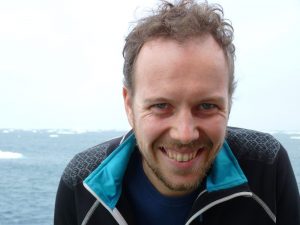
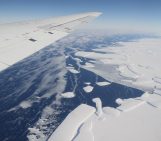
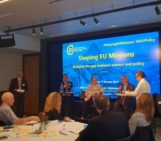
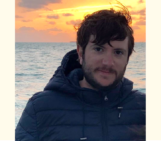
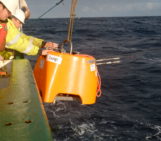
Pingback: GeoLog | Imaggeo On Mondays: "The most valuable thing we extract from the ocean is our existence" Dr Sylvia Earle - GeoLog